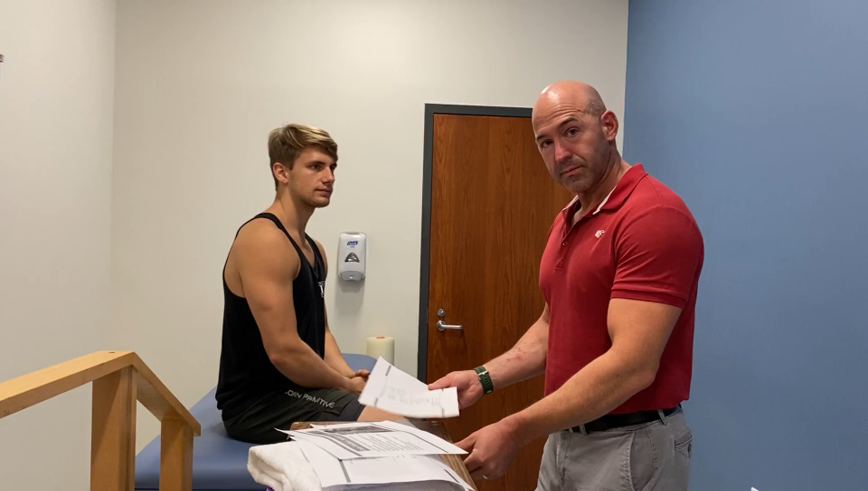Written By: Dr. Chad Hensel, PT, DPT, MHS, CSCS
The HEP, or home exercise program. While it is almost always used by clinicians in almost any setting, recent research has shown that the compliance rate may be as low as 35%!!! You do not have to be an educator to recognize that a 35% is a failing grade. Why are they failing? Is it the clinician? The patient? Both? Let’s identify 3 problems with solutions.
PROBLEM 1: TIME— how many exercises are you giving for home? Compound this with the daily frequency and we must examine how much time are we asking for from our patients? I completed a survey in our health system and found that of the 50 clinicians I surveyed, 85% acknowledged giving 5-10 exercises with a two or three time a day frequency.
SOLUTION: We must look at the less is more axiom. The research discussed in the Home Exercise Programs webinar will examine that compliance is inversely linked to the number of exercises given. In other words—the fewer you give, the more likely they will do them! Select two exercises that you deem MOST important and start there!
PROBLEM 2: PAIN— Patients will often report that they did not complete their “homework” because they experienced pain or discomfort. This was also identified in the evidence as one of the top reasons patients may not be compliant.
SOLUTION: As therapists and assistants, we are trained to modify! Identify the cause of the issue and then seek a modified option that they can do. For example, I had a patient experiencing some discomfort when performing a forward shoulder raise at home. Based on the nature of the symptoms, I advised changing the position of the shoulder by rotating the thumb up and placing the shoulder in neutral alignment. This allowed for pain-free motion and was a simple fix!
 PROBLEM 3: LEARNING STYLE— We don’t know how they learn best! We each of innate, preferred methods of learning. Some of us are visual, while others may prefer listening. Still, others may learn best from hands-on activities or demonstrations. There are still others who learn better from a combination of these (myself included).
PROBLEM 3: LEARNING STYLE— We don’t know how they learn best! We each of innate, preferred methods of learning. Some of us are visual, while others may prefer listening. Still, others may learn best from hands-on activities or demonstrations. There are still others who learn better from a combination of these (myself included).
SOLUTION: We need to understand a patient’s preferred way of learning and use that as a tool. If they are visual, make sure to give pictures. If they want to listen, can you provide a link to a recording they can hear? Make patients physically practice if demonstration works better for them.
As you can see, this topic may not be as easy to fix as we may have thought. I invite you to join me on September 16th for my Summit Live Webinar, Home Exercise Programs to learn more about this problem and how to fix it!
Explore continuing education courses from Chad below:
A Rehab Professional’s Guide to Pharmacology
Bariatric Management Effective Assessment and Safe Treatment
Exploring Medications and Supplements and the Impact on Physical and Cognitive Function
High Intensity Interval Training (HIIT)
Visit summit-education.com for more information.

